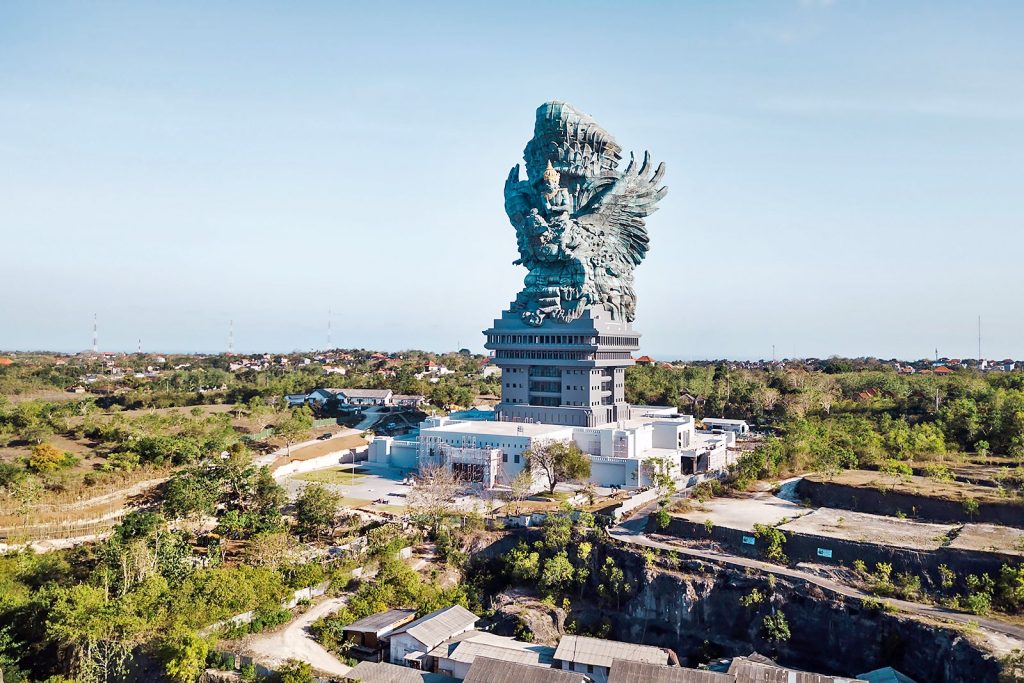Bali, the paradise island renowned for its natural beauty and cultural richness, is home to numerous awe-inspiring works of art. Among the architectural wonders and monumental artworks that captivate visitors in Bali is the Garuda Wisnu Kencana (GWK) Statue. This majestic sculpture stands as a symbol of Indonesia’s grandeur and beauty, not only captivating the eyes but also embodying profound cultural significance.
- History of Garuda Wisnu Kencana
The Garuda Wisnu Kencana, commonly known as GWK, is a monumental artwork depicting the deity Wisnu riding atop the mythical bird Garuda, considered Wisnu’s official vehicle in Hindu beliefs. Initiated in 1990 by a Balinese entrepreneur named I Nyoman Nuarta, this ambitious project aimed to create a monumental artwork reflecting the beauty and strength of Indonesia’s cultural heritage.
- Design and Structure
The GWK statue stands tall at a height of 121 meters (396 feet), making it one of the tallest statues globally. The upper part of the sculpture portrays Wisnu standing on the back of Garuda, exuding a calm and graceful demeanor. Constructed with sturdy steel and reinforced concrete, the structure provides strength and stability to the statue. Although not entirely completed at the time of writing, GWK has already become an iconic and popular tourist attraction in Bali.
- Meaning and Philosophy
The Garuda Wisnu Kencana statue is not merely a beautiful monumental artwork but is also laden with deep meaning and philosophy. In Hindu belief, Wisnu is regarded as the preserver and protector of the universe, while Garuda symbolizes freedom and justice. Through this sculpture, Nyoman Nuarta aimed to convey a message about the importance of maintaining balance and harmony in life.
- Activities in the GWK Complex
Apart from the main statue, the GWK complex offers various facilities and activities for visitors. An amphitheater hosts a range of cultural performances, including traditional Balinese dances. Additionally, the venue serves as a host for cultural events, concerts, and art exhibitions, enriching the experience of tourists.
- Tourism and Local Economic Impact
The GWK statue is not only a source of pride for the Balinese community but also has a positive impact on the local tourism and economy. Interestingly, the presence of this statue has increased the number of tourists visiting Bali, providing economic opportunities for local traders, restaurant owners, and other tourism service providers.
- Conclusion
The Garuda Wisnu Kencana statue is a monumental artwork that not only serves as a primary tourist attraction in Bali but also reflects the cultural richness and spirituality of Indonesia. With its grand design and profound meaning, GWK stands as a symbol of Indonesia’s greatness and beauty, captivating the hearts and souls of every visitor. As the GWK complex continues to evolve, it is expected that this statue will remain a focal point of attention and inspiration for generations to come.

